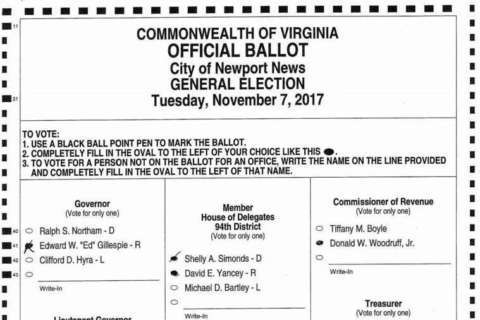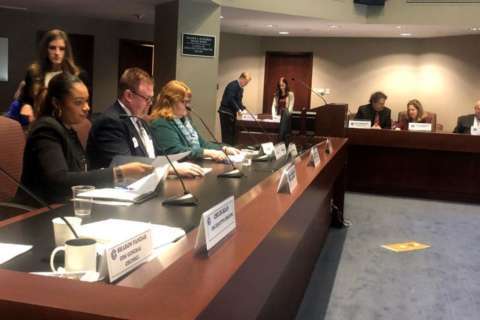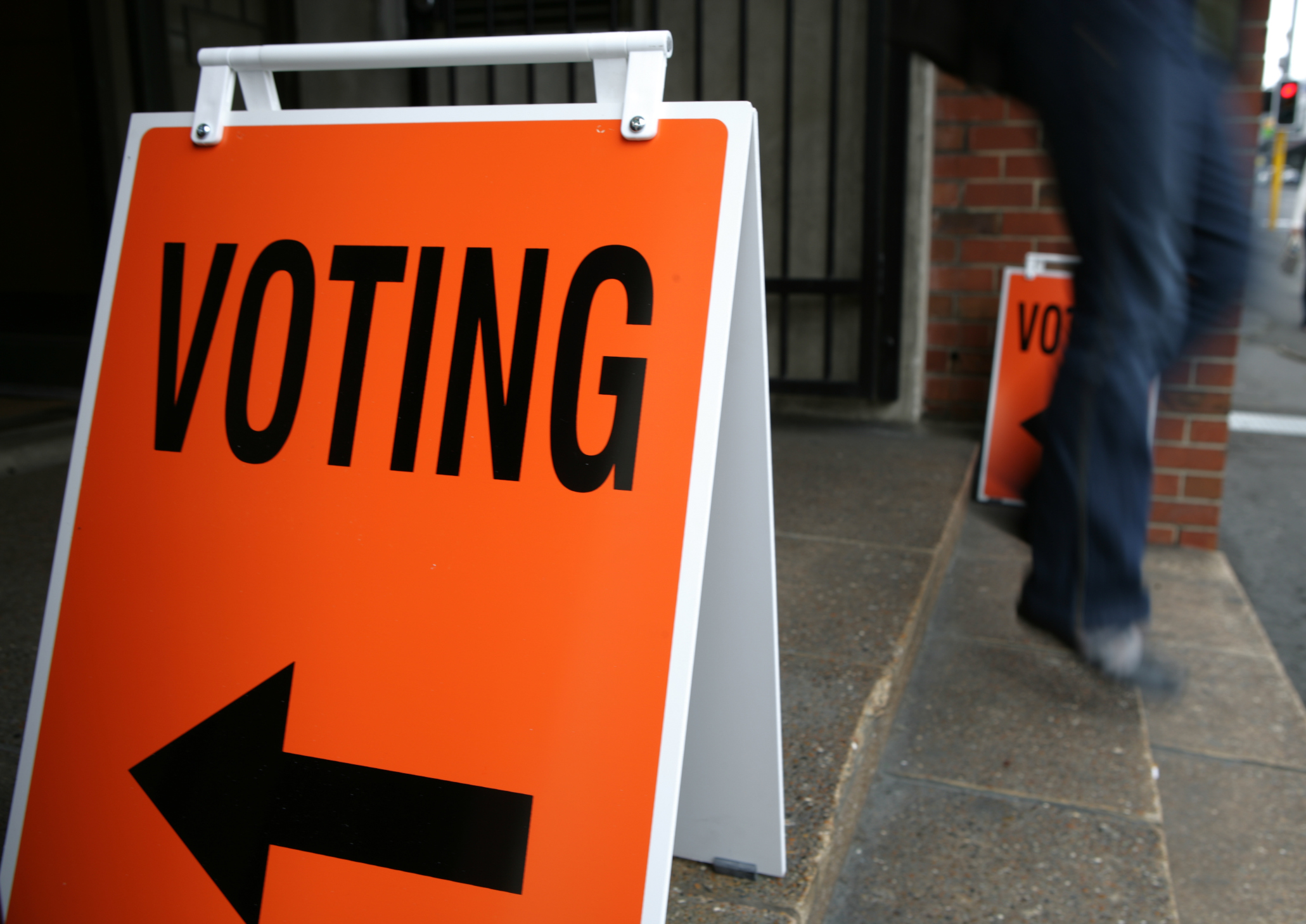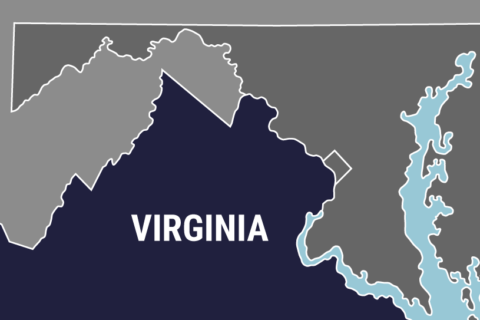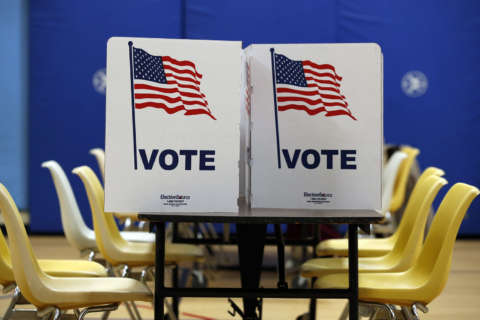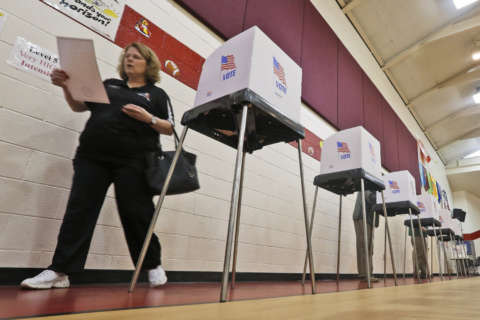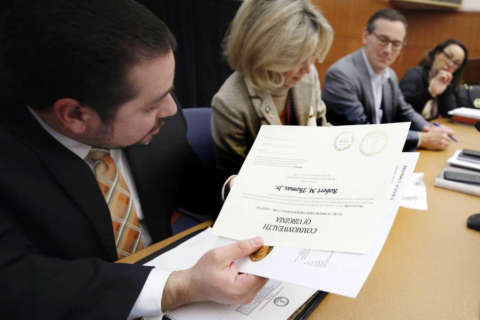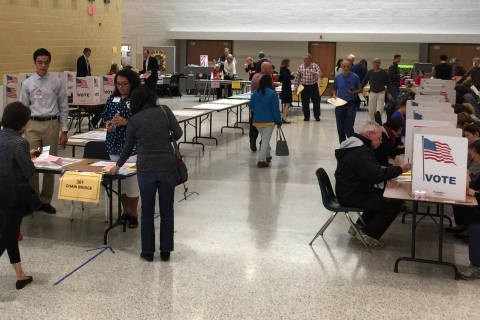WASHINGTON — Months after control of Virginia’s House of Delegates was decided by a disputed, mismarked ballot, the State Board of Elections will set new ballot requirements that include clearer instructions for voters.
Proposed changes to be adopted March 23 address “a need for improved clarity and additional examples” and “a need for improved usability of ballots for voters based on best practices and research,” a memo to the three-member board said.
Virginia would go from more general rules about what printed ballots should look like to two specific approved forms. One of the proposed forms would include voting instructions in the leftmost column on the front of a three-column ballot. The other secondary choice would place voting instructions across the top of a two-column ballot just beneath the header that lists the date and type of election.
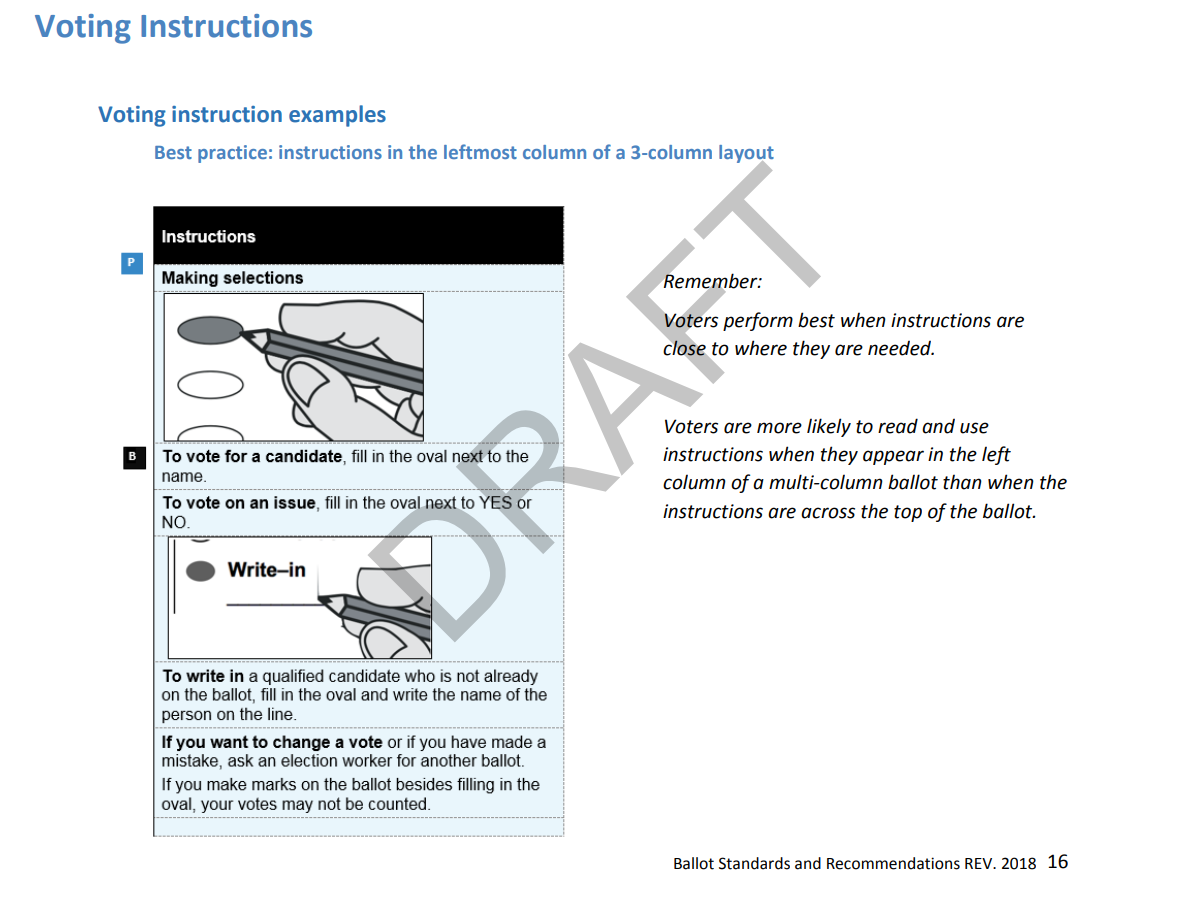
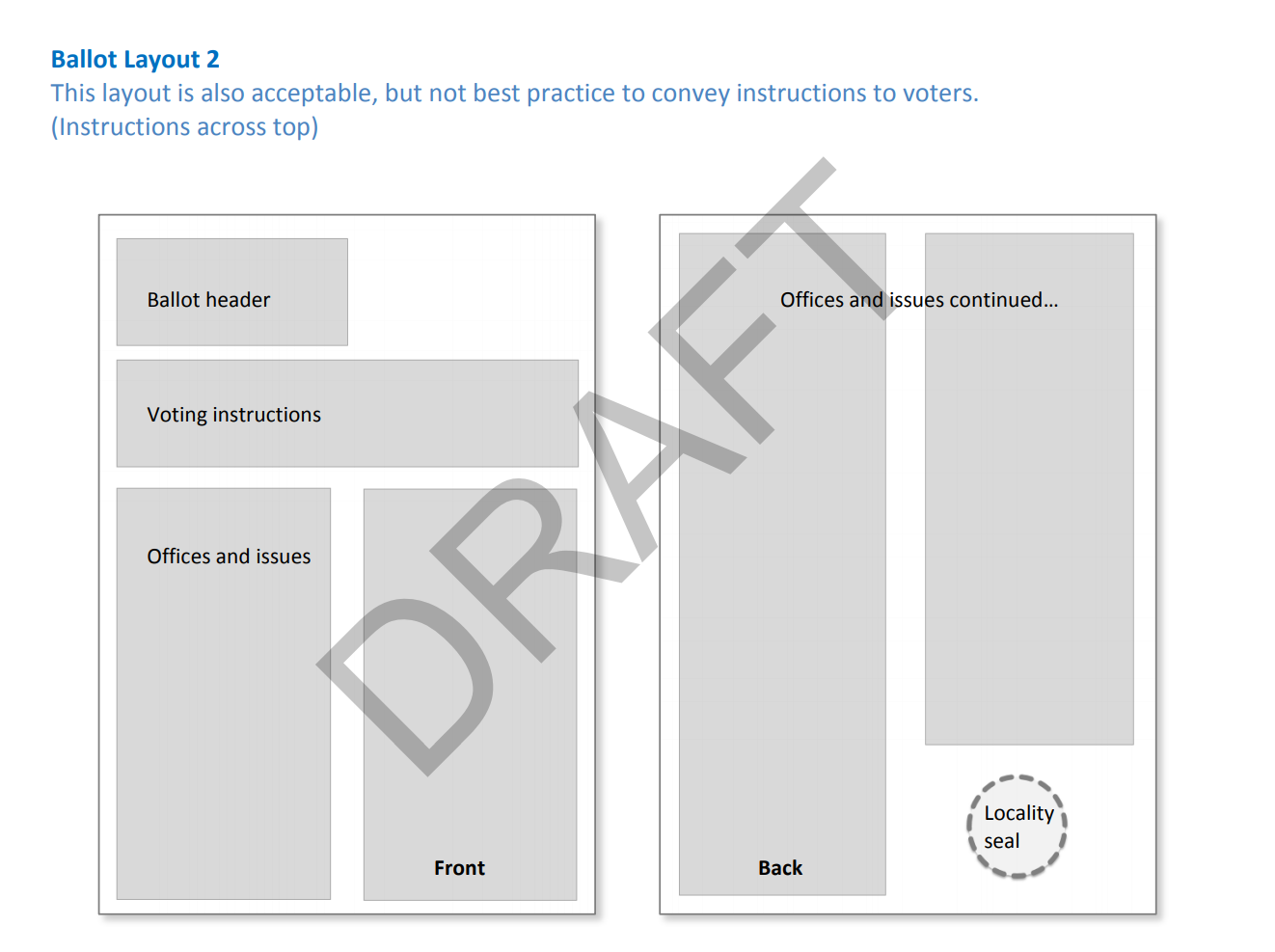
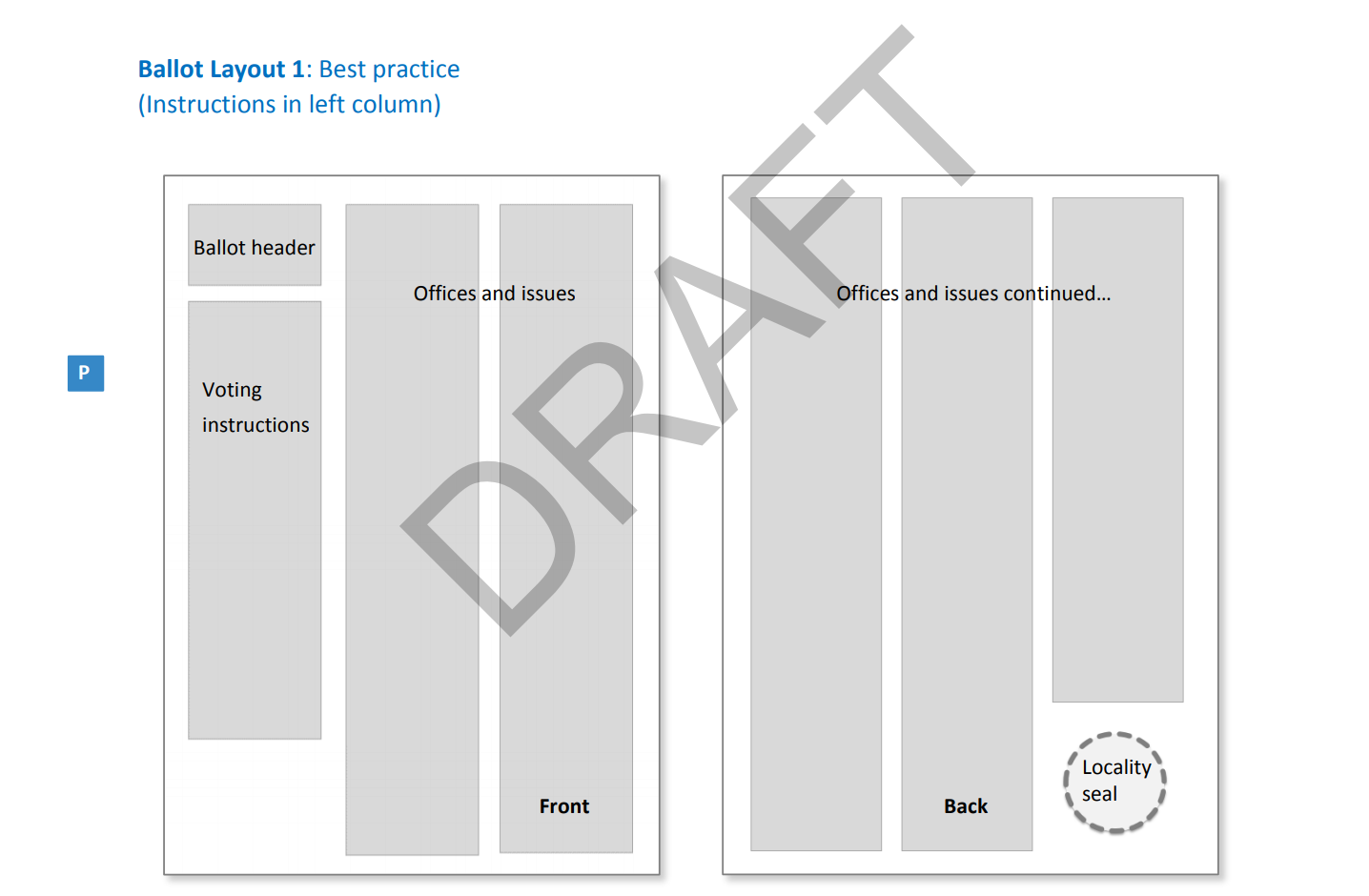
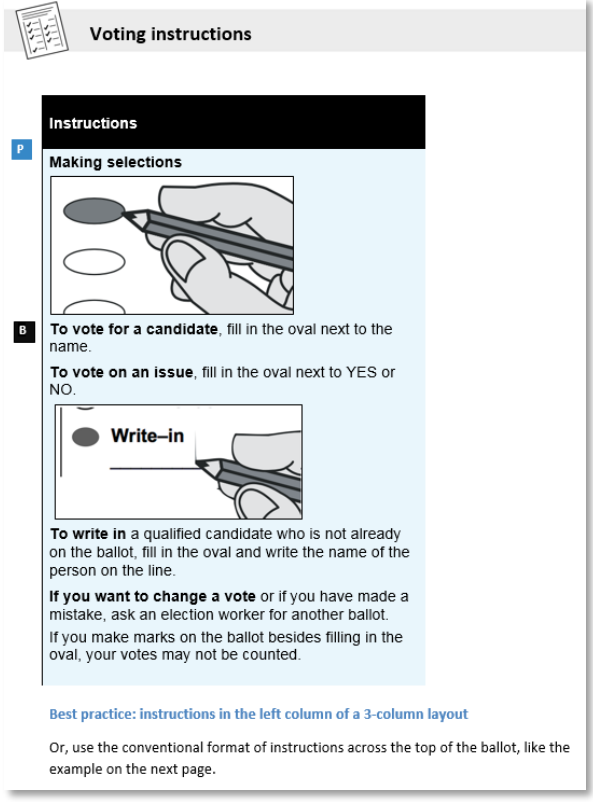
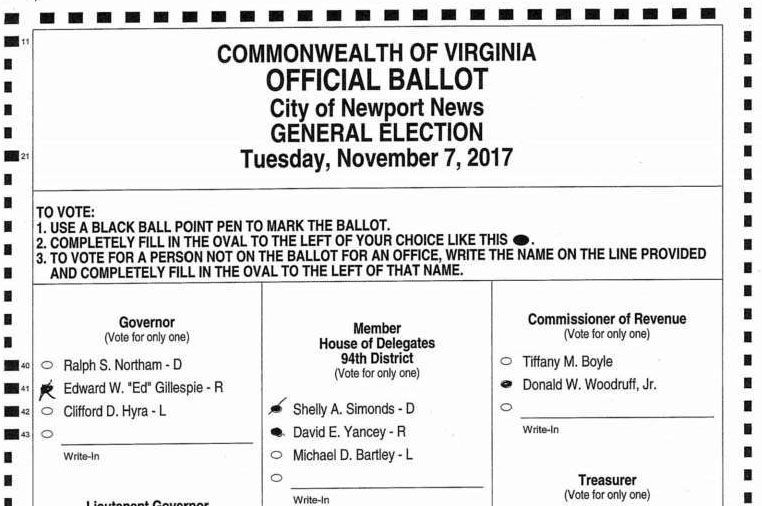
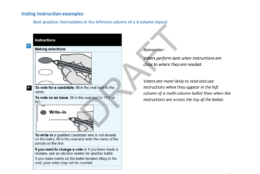
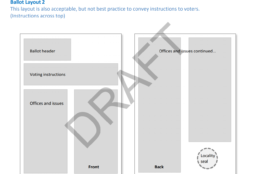
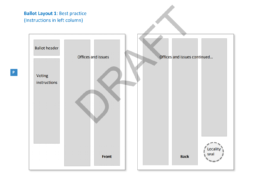
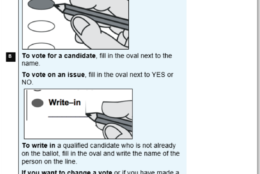
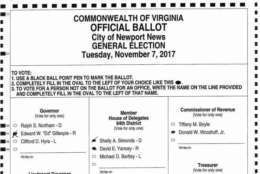
Research from national elections groups, used as a reference for the new guidelines, finds voters are more likely to use the instructions when they are in the left column of a ballot than when the instructions are printed across the top.
“Voters perform best with clear instructions of how to communicate their choice,” the memo said.
State law already required some type of instructions, but those instructions could vary from one jurisdiction to another.
The draft guidelines recommend black ovals be provided for voters to fully fill in next to the candidates they support rather than boxes or arrows that can be filled in with checkmarks, such as the current ballots Arlington and elsewhere. They also recommend accurate instructional illustrations that demonstrate how to vote correctly.
“Help voters know what to do and where to go next,” the draft guidance said.
The instructions will still not ensure all voters mark their ballots properly. The mismarked Newport News ballot that tossed a one-vote recount win into a tie that ended up in a random drawing of names already included a number of the new best practices. The voter in that case — and other voters across the commonwealth in Nov. 7 races decided by dozens or hundreds of votes — filled in bubbles for multiple candidates, before leaving a slash through Democrat Shelly Simonds’ name.
A three-judge recount court determined that the voter intended to support Republican David Yancey, who then went on to win the random drawing in early January to give Republicans 51-49 control of the House of Delegates.
The issues in the 94th District were separate from a mishap in which voters were assigned to the wrong House districts across the state.
“Include information that will prevent voters from making errors,” the draft guidelines instruct local general registrars and electoral boards.
Few voters realize that when they do make a mistake, they are entitled to request a new ballot from a poll worker and have their initial one discarded. The guidelines would recommend adding that information to the ballot, along with an explanation of how to write in a candidate for general elections (state law prohibits write-ins in primaries).
Other changes include fewer restrictions on how candidates can have their names listed on the ballot, an acknowledgment that the commonwealth no longer allows the general use of touch-screen voting machines, and tweaks to the fonts or font sizes to be used.
The State Board of Elections could also now more frequently change any abbreviations used for political parties next to the names of candidates for General Assembly, statewide and federal offices to prevent any confusion. For example, the board documents note abbreviations might be different if only one of the Green Party or Independent Green Party have candidates running than if both do.
Ballots for general elections would continue to have as many write-in spaces as there are seats being elected.
Pollbook problems
Many electronic poll books, used to check in voters, crashed across Virginia during the November election after the software provider quietly rolled out updates that failed to work.
Since the underlying software was certified for use in 2008, a new Department of Elections review concludes the company, DemTech, was not legally required to notify the State Board of Elections of the updates.
A law requiring certification of electronic poll books grandfathers in systems in use before May 2014.
The system has been used in more than 80 Virginia localities, and the poll books failed in many locations in November.
“These issues included network connectivity, freezing screens, delayed check-ins, and software shutting down. The version upgrades and patches were not presented to the (Department of Elections) for testing prior to their live implementation in the election,” a Department of Elections memo said.
While the Department of Elections agreed the upgrades and patches did not require certification, “the courtesy of allowing the Department to test the changes prior to use in a live election should have been offered,” the memo continued.
The memo called the issue “alarming” because of all the tight House of Delegates races this fall, but did not go any further than requesting increased cooperation and testing in the future.
Other issues on SBE agenda: 2020 election, June primary
Anyone interested in becoming a presidential elector in 2020 will not need to provide quite as much personal information.
As part of a consent decree due to a lawsuit filed by former Democratic presidential candidate Rocky De La Fuente, the State Board of Elections is due to amend the filing form for qualified electors to remove a field that required the last four digits of a voter’s Social Security number. The form would also clarify that candidates to be an elector may provide their certificate of qualifications to the Department of Elections in person.
The meeting is also scheduled to include the random drawing of names to determine the ballot order for the June 12 Congressional and U.S. Senate primaries.

